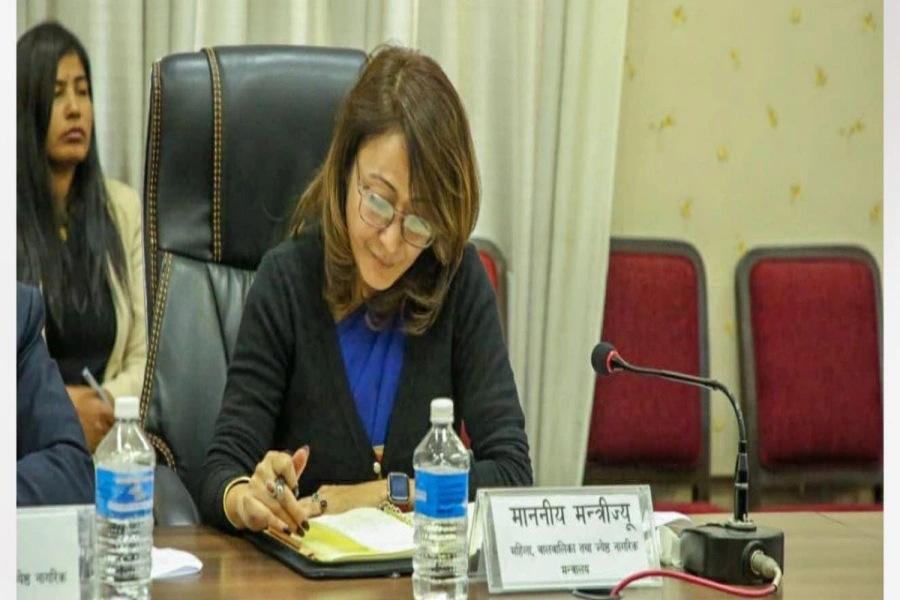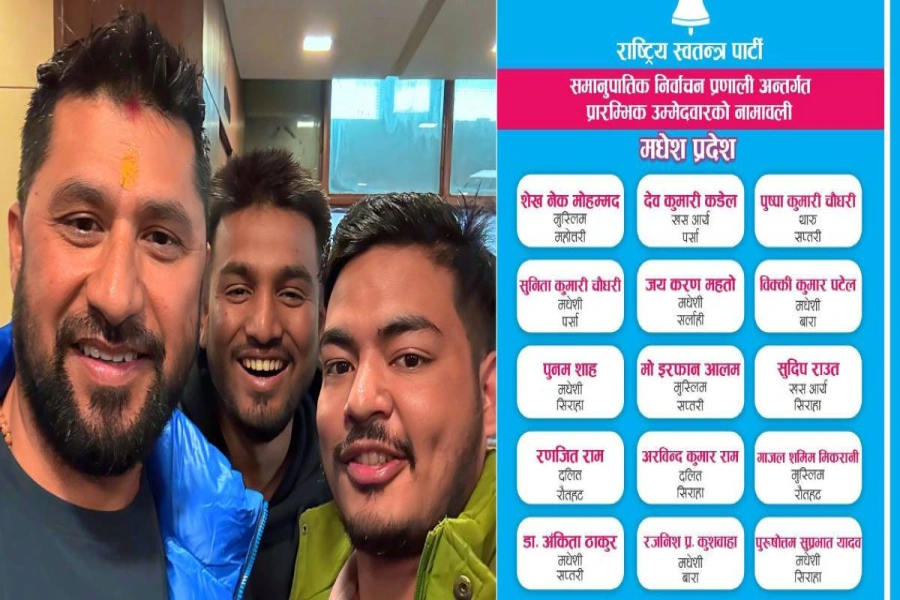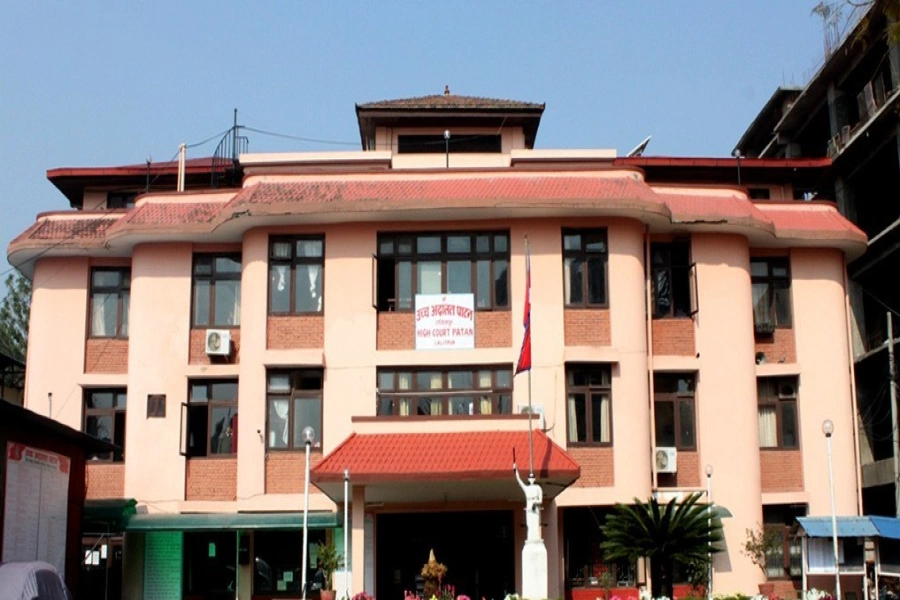Climate action has become a buzzword with a tendency to be associated with advocacy. While making climate action visible and vocal is essential, I believe we also need tangible action on the ground. But as young people and students, there are limited opportunities for engaging in action. This is where student challenges come into play.
One of such challenges was the EGIS Foundation’s: Team Up for Climate Challenge which is organized every year targeting college students to come up with innovative climate solutions. We could form a group of up to 5 people all of whom should either be a student or have graduated less than a year. Our team – Wetlands for Nepal – included many of us who were either graduated or on the cusp of graduation participated in this challenge this year.
Our team has been working on wetlands since 2022. It was also formed - thanks to another student challenge - theNature Based Solutions Challenge by Wageningen University & Research (WUR) where we worked in controlling sedimentation and pollution in a sub-urban wetland, Nagdaha. This time round we decided we wanted to work on increasing urban resilience to climate change. One of our priorities was urban flooding because - let’s face it one way or another - Kathmandu residents have all been impacted by it. Large scale solutions in the densely populated areas are difficult from the point of finance, space, and other technicalities. Which is why we wanted to design a small-scale local solution to our problem, and we decided on rain gardens.
The challenge was intensive, but we had ample support. The first meeting with our mentor proved to be decisive as she asked us the right questions to devise our solution. “Do you have data to make calculations?”, “How much rainwater do you want to hold off with your solution?”, etc. We had not considered such empirical metrics for designing our solution and the questions got us started in following a systematic approach to present our solution.
First, we contacted a research organization, S4W, for local precipitation data of our area of interest and they were kind enough to lend us the daily precipitation data from May to September 2018 to 2023. The maximum rainfall during this time period was found to be 100.9 mm/day. Coinciding precipitation data with flood records obtained from Nepal Disaster Risk Reduction Portal 2018-2023 and subtracting this with 99 percentile of rainfall we obtained a value of 20.13 mm/day rainfall that we wanted to control.
Hence,
SHIFT for Our Planet: Youths urge authorities to make climate j...

• Precipitation to be controlled (P)= 0.002 m/day
• Area of interest (A) = 1,530,000 m^2 (Our area of interest with a central point of Sattale, one of the severely affected areas due to urban flood).
• Volume of rain garden required = P*A = 3,060 m^3
Considering, unit volume of the rain garden to be 108 m^3, we would require around 285 rain gardens to control floods in Chabahil and surrounding area. Unfortunately, the rain gardens could not sustain the amount of rainfall we wanted to control because they were small shallow structures. So, we sought to modify our design. We started looking into other designs and we came across percolation pits design by Mumbai's Rainman Subhajit Mukherjee. Thus, we decided to combine the rain garden with the percolation pit in our design.
Out of the 320 team submissions from across the globe, we were among the 16 selected teams who all pitched on different climate solutions. After countless tasks from developing business canvases to mindmaps to action plans to finally presenting a pitch to the jury; our team won the competition. Top three teams were also further supported with financial planning coaching.
Figure 1: Schematic of solution to urban flooding. Layout by Kevin Bajracharya.
As first laurate our team won a grant of €5,000 and a study trip and award ceremony in Paris along with a conditioned offer of a boost of €7,000 for project continuity. For all our team members it was a first visit to Paris and the city did more than meet our expectation: from the glittering light show at Eiffel Tower to walks along the epicenter of fashion, Champs-Élysées. From the hike in the charming Montmartre hill to the stunning views of Notre-Dame Cathedral which is being rebuilt. Moreover, it is a super walkable city.
Our team also got opportunities to meet many NGOs and agencies working on conservation and nature-based solutions. Their advice and feedback on our solution and its vitality have contributed to further re-designs and changes. We also had a chance to visit Produrable, a trade fair dedicated to sustainable economy players. At this single event we got to meet companies dealing with a range of sustainable solutions from renewable energy, carbon reporting and credits, climate simulation and games and much more with more than 300 exhibiting partners.
Figure 2: Wetlands for Nepal wins Team Up for Climate Challenge 2024. Team members (Anu Rai, Bibek Shrestha, Rabina Dhakal, Shreeya Manandhar, and Sujan Prakash Pradhan)
Our journey till now has presented us with many opportunities such as In Our Hands programme with British Council Nepal, where we worked in prototyping of biopesticides from invasive plants; Youth Food Lab incubator program at the World Food Forum which provided us opportunities to make food system more sustainable; and Sustainability Accelerator Microgrant by Chatham House which is supporting our initiative of charting the mythological Nagraj Trail in Nepal. I attribute these opportunities to the WUR Student Challenges which helped us learn how to be in a team and work towards a local and sustainable solution.
Challenges like these are a great way of inculcating students and young people into climate action. Not only are we getting mentorship and training on technical aspects and entrepreneurship we are also getting a chance to implement the solution. Especially in Nepal I believe there is a gap between studies and practical implementation. Most of us (if lucky) will get an internship or job right after studies but working in teams, building an actual solution, and implementing that solution often has a gap and challenges.




































